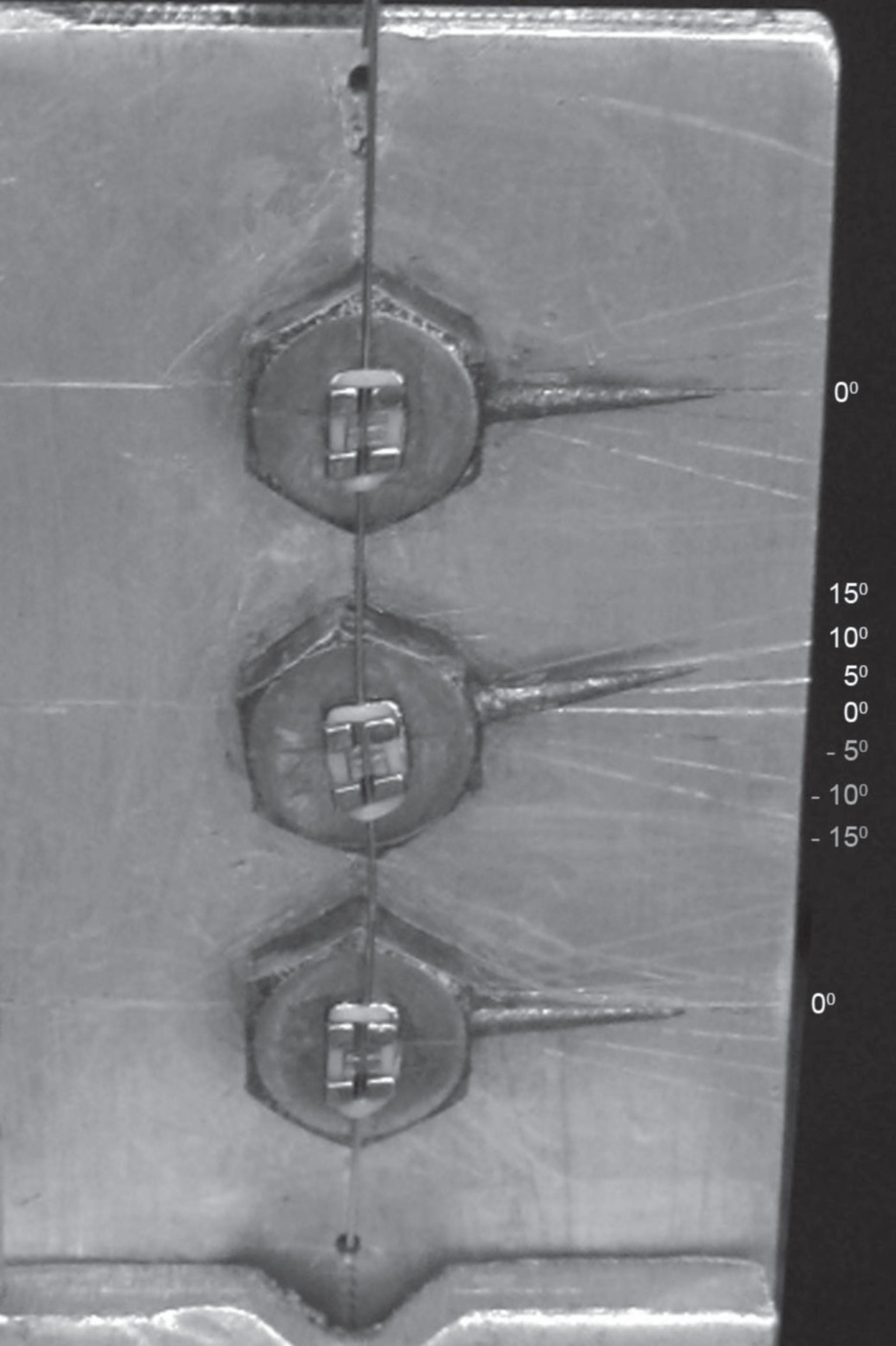OBJECTIVE:
To compare the static frictional forces generated at the bracket/wire interface of stainless steel brackets with different geometries and angulations, combined with orthodontic wires of different diameters.
MATERIAL AND METHODS:
The frictional forces were evaluated with three different types of metal brackets: a passive self-ligating (SmartClipTM, 3M/Unitek, Monrovia, USA), with a modified slot design (Mini Uni TwinTM, 3M/Unitek, Monrovia, USA) and conventional (Kirium, Abzil, São José do Rio Preto, Brazil). The samples were mounted in a testing device with three different angulations and tested with 0.014" and 0.018" stainless steel wires (American Orthodontics, Sheboygan, USA). The static frictional force was measured using a universal testing machine (DL 500, EMIC®, São José dos Pinhais, Brazil) with a crosshead speed of 1 mm/min. Statistical analysis was performed by two-way ANOVA followed by Bonferroni's post hoc test.
RESULTS:
There was a significant difference (p<0.05) in static friction when the three types of brackets were tested with the same wire size. The wire diameter influenced friction only when the brackets had a 10º angulation (p<0.05). The angulation influenced friction (p<0.05) when the brackets were associated with a 0.018" wire.
CONCLUSION:
Brackets with a modified slot design showed intermediate static frictional force values between the conventional and self-ligating brackets tested.
Friction.; Orthodontics.; Orthodontic brackets.


